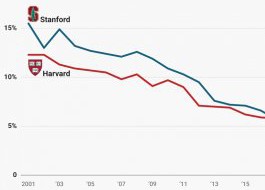
An unlikely group of scientists, chefs, and academics is banding together to transform the eating habits of college students.
Known as the Menus of Change University Research Collaborative, cofounded last year by Stanford University and the Culinary Institute of America, the alliance aims to ditch the unhealthy, unsustainable foods commonly served in dining halls in favor of tasty, more plant-based offerings.
"The global vision is about great tasting food that’s good for you and for the environment," says cofounder Christopher Gardner, a professor of medicine at the Stanford Prevention Research Center.
So far, more than 40 colleges and universities across the country, including Harvard, Kansas State, University of Southern California, and University of Montana, have signed up for the mission. By the end of this summer, they have pledged to reduce their purchases of red meat by 10%, increase fruits and vegetables by 10%, and serve 10% more plant-based protein dishes. In addition, these schools are actively utilizing their kitchens and dining halls as living laboratories, experimenting with recipes and other strategies to get students to make better, more sustainable choices.
Of course, this isn’t the first attempt to persuade students to adopt healthier eating habits. Meatless Monday, for instance, has been around for more than a decade. But Gardner argues most efforts have yet to yield significant systemic change because their approaches have been turn-offs.
"We had to stop leading with health claims and food that tastes like cardboard," he explains. “We had to make your mouth water.” That’s why professionally trained chefs, as opposed to geeky scientists and health nuts, are central to this approach. They are charged with developing delicious menu items that incorporate principles derived from sound medical, nutritional, and environmental science.
 Universities offer the perfect testing ground for the effort. AP Photo/Elise Amendola
Universities offer the perfect testing ground for the effort. AP Photo/Elise Amendola
Greg Drescher, the vice president of strategic initiatives and industry leadership at the Culinary Institute of America, says universities offer the perfect testing ground for the Collaborative.
First, their populations are increasingly interested in preserving the planet and eating healthier, and are therefore more open-minded. Students are also a captive audience, often eating five days a week in the same dining hall. In addition, these institutions tend to be operationally flexible, have sufficient resources, and are able to implement changes quickly.
The challenge is figuring out how to make the most progress. “Getting people to adopt healthier eating habits is different from other public health initiatives, like wearing a seat belt or stopping smoking, which are mainly about repetition or passing a law,” explains Drescher. “Food is much more complicated. We need more research on how to engage people in a way that makes healthier eating more appealing and the default choice.”
So far, early efforts are showing promise, particularly around what the group calls the protein flip. Since red meat has been linked to disease and meat production contributes to global warming, the Collaborative is focused on reducing red meat consumption. To that end, five colleges and universities recently conducted taste tests with students on meatballs that featured different ratios of beef blended with mushrooms.
The idea isn’t to turn meat lovers into vegetarians or to deny them food they want. Instead, Drescher says chefs will create equally delicious alternatives that bridge the two extremes. “To move great masses toward more produce and less red meat, it’s important to fill in the gaps of choice,” explains Drescher.
While the results of that experiment are still being compiled, the hope is that students will ultimately prefer the taste of one of the blended options over pure beef because it will be moister and more flavorful. Down the road, beef blended with other ingredients, such as quinoa or lentils, will be tested.
 Stanford University. Thomson Reuters
Stanford University. Thomson Reuters
Several universities have already exceeded the target for decreasing red meat purchases. Stanford, for instance, has replaced all ground beef on its menus with a blend that features 70% beef and 30% mushrooms. This includes hamburgers, tacos, chili and more. Other schools, including Northeastern University and Lebanon Valley College, are also using blends.
Northeastern, which feeds 20,000 people a day, has gone even further. Its community is already consuming 25% more produce, twice the whole grains, 30% less sodium, and 10% less soda. The Boston-based university is also tackling food waste. Starting this fall, dining halls will no longer feature trays.
"Right now, all students are on an all-you-care-to-eat model, so they tend to pile up stuff on their trays that they often don’t eat," says Maureen Timmons, Northeastern’s Director of Dining Services. The hope is that going tray-less will lead to less excess. Northeastern is also experimenting with signs in dining halls that will remind students to take only what they can eat.
At Rutgers University, chefs are tackling vegetarian options and processed foods. The school recently stopped outsourcing its chicken fingers, turkey, and roast beef, preferring instead to make these items fresh in its own kitchens. Processed vegan nuggets, for instance, have been replaced with tastier cauliflower nuggets in sauce. Bread is also baked on site instead of purchased in bags from outside vendors.
"Hopefully in five years, this will be mainstream. A new crop of students will come in and see a university with a healthy culture around food," says Peggy Policastro, director of behavioral nutrition with Rutgers Dining Services.

Even the language around food on campuses is likely to change. Eric Montell, the executive director of dining at Stanford, has been working with psychologists and Stanford’s Mind and Body Lab to study how wording around food impacts choice. What they found suggests a strong correlation between how food is labeled and its appeal to diners. In one test, Stanford served the same carrot recipe on consecutive days, only changing the label.
One day they were called low-sodium carrots, the next fiber-rich carrots, and the last twisted glazed carrots. Interestingly, students ate significantly more carrots when the message highlighted taste instead of health. “We’ve found that using flavorful and indulgent language to describe our food, particularly more healthful items like vegetables, enhances the number of students who choose to eat these foods,” explains Montell, adding that redesigning dining halls in ways that place plant options front and center while moving pizza and burgers to the rear have also been effective.
Such results are encouraging. For now, the Collaborative’s focus is to have a measurable impact on the college-food ecosystem, from growers to suppliers to buyers to consumers. Once that goal has been achieved, Gardner says there’s no reason to stop there. His vision is for other large institutions like hospitals, prisons, and senior citizen centers to copy the campus models by serving delicious, healthy and sustainable food. Notes Gardner: “We think we can change markets by first scaling up at universities and then having people carry the good practices forward into their lives.”




